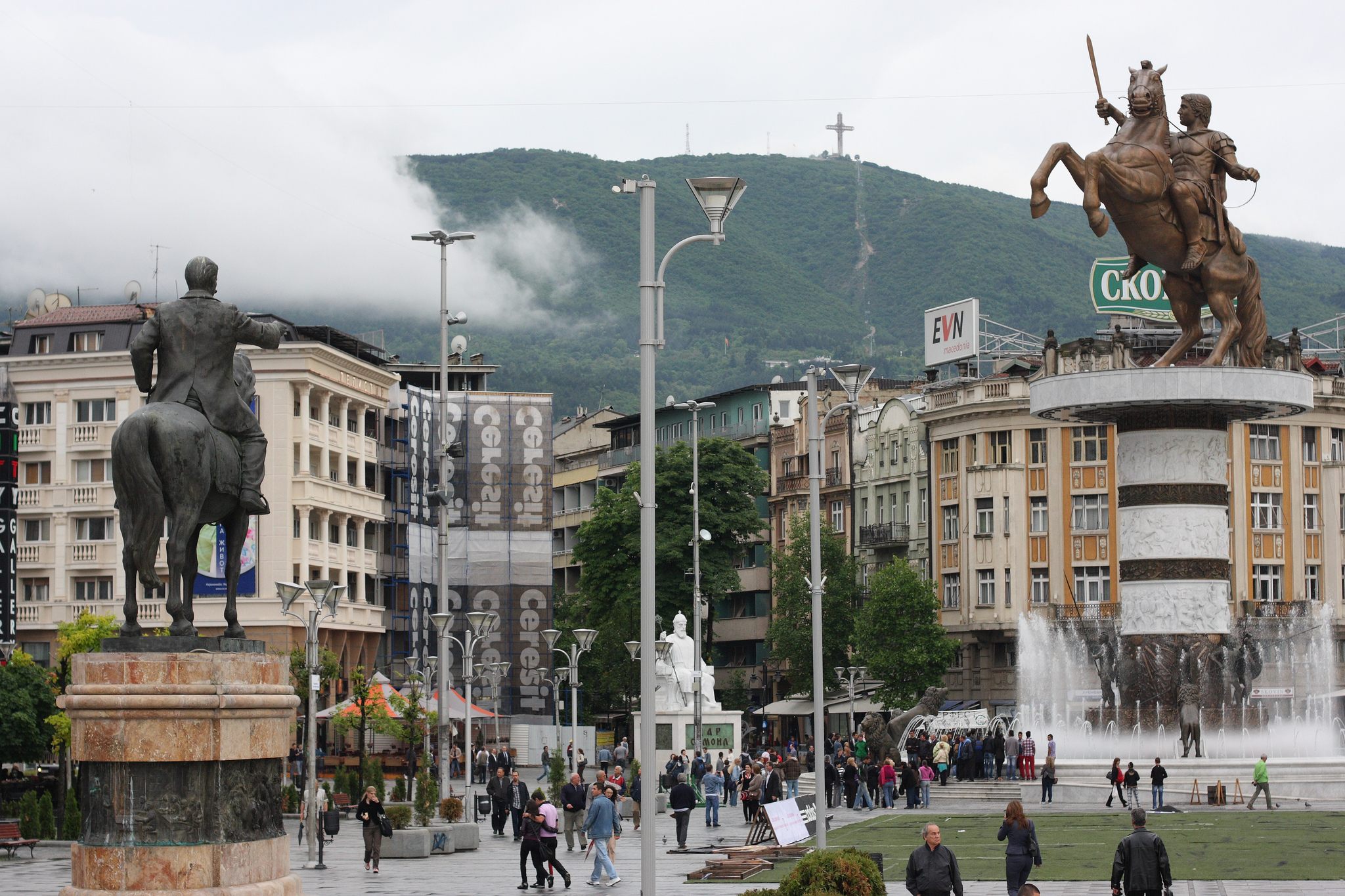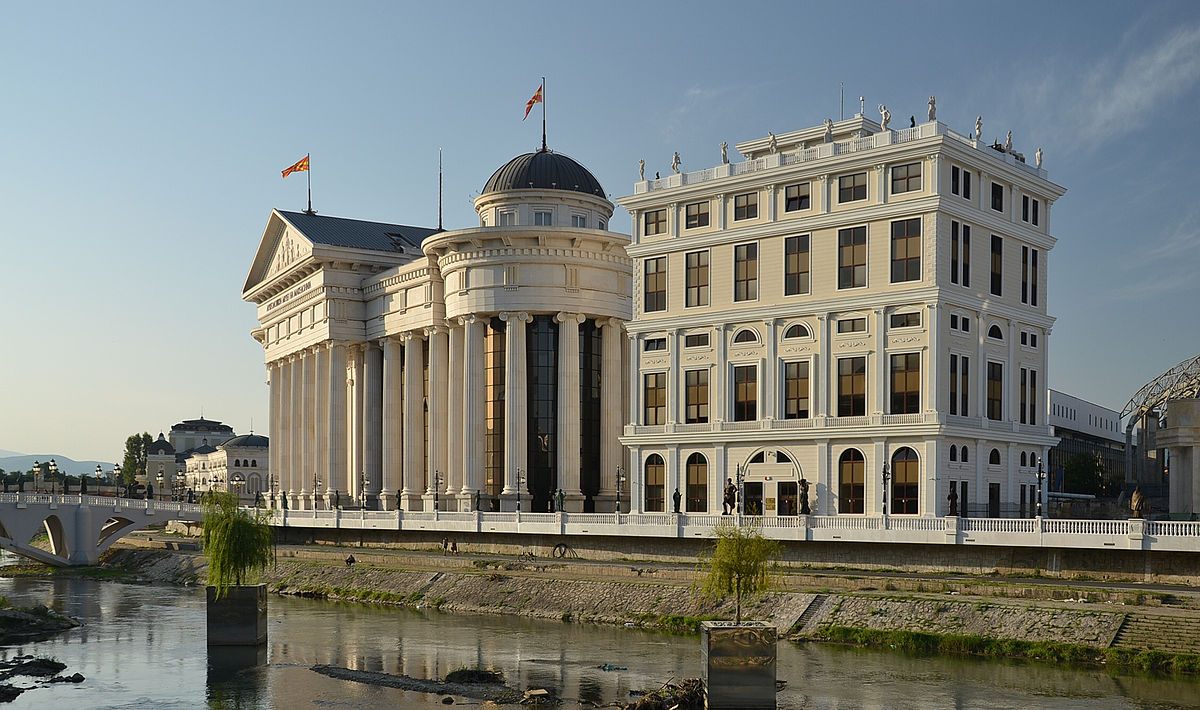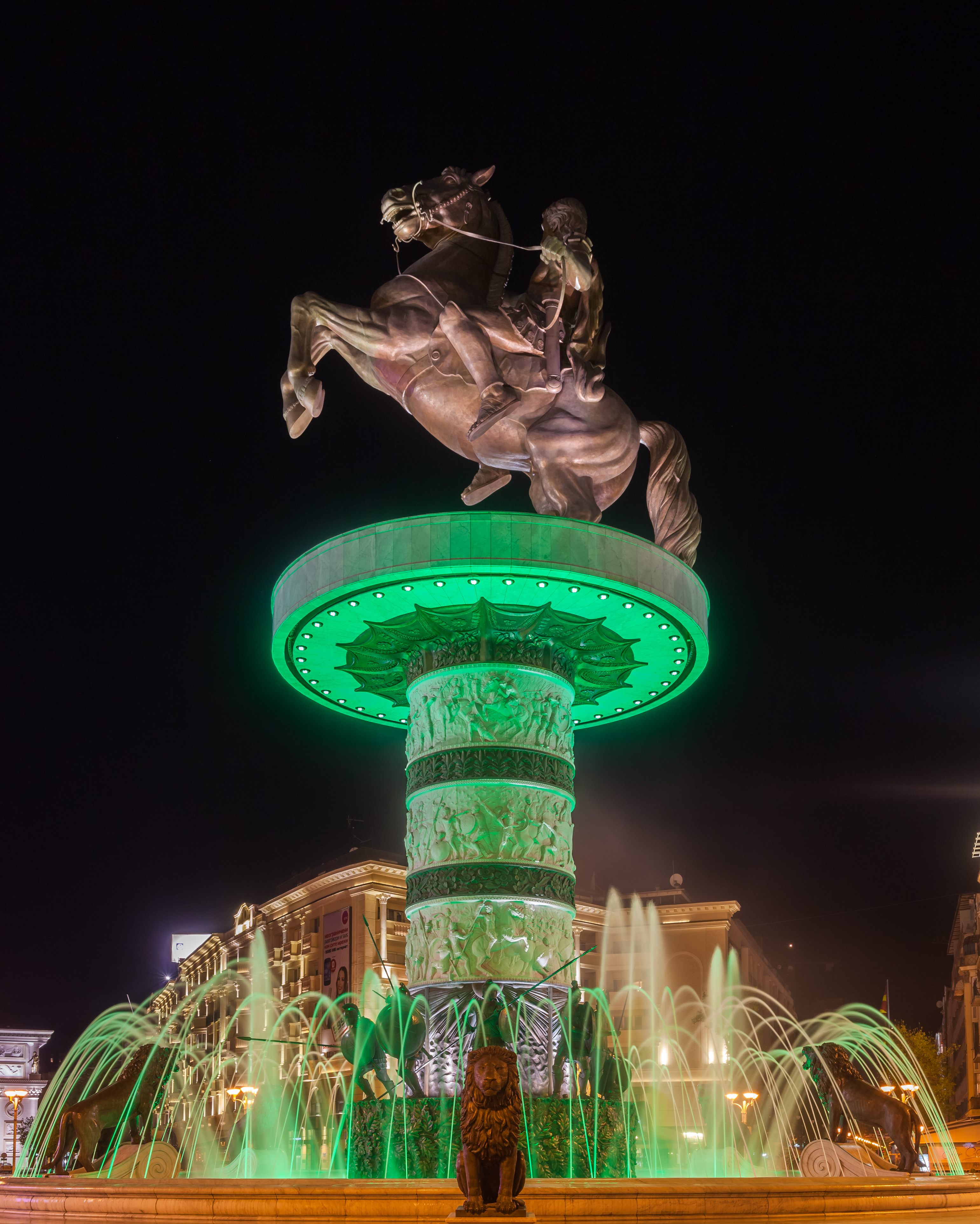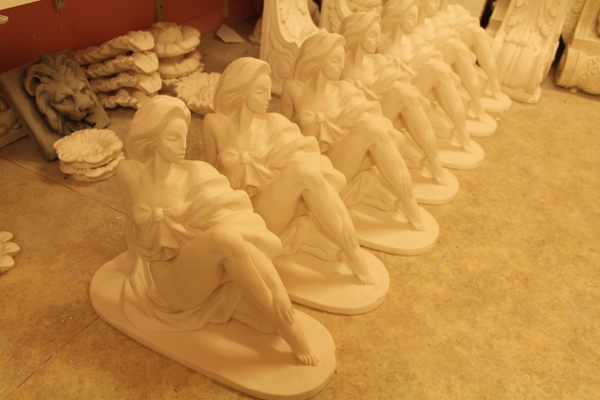How to Build a Fake Ancient City in Just 5 Years
 New statues in Skopje. (Photo: yeowatzup/Flickr)
New statues in Skopje. (Photo: yeowatzup/Flickr)
For the last five years, the Balkan nation of Macedonia has been involved in one of the more improbable public works projects around, filling the streets of its capital, Skopje, with gaudy, faux-antique statues and buildings. The aim: to turn this earthquake-prone city, where the main influence was previously 1960s concrete Stalinist architecture, into a bombastic neoclassical theme park.
To make the project even stranger, many think that it was all done to spite Macedonia’s southern neighbor.
The tiny country has long traded barbs with Greece in its quest to reclaim the third-century B.C. conqueror Alexander the Great as a native son—the capital’s airport was renamed Skopje Alexander the Great Airport not long ago—and even to officially call itself Macedonia (which is also a region in northern Greece). Now, thanks to embattled Prime Minister Nikola Gruevski’s massive building project, Skopje is home to a 72-foot-tall marble statue of the ancient king on his trusty war-steed, Bucephalus. (It’s also worth noting that the controversial antiquation program is not the only scandal, as the country is currently being rocked by a huge surveillance controversy, which has resulted in dead protestors and police.)

(Photo: Dalco26/WikiCommons CC-BY-SA-3.0)
Alexander the Great, whom many believe was poisoned by his fellow Macedonian aristocrats, is hardly alone on Skopje’s skyline. He could have a dangerous dinner party with at least half a dozen other figures from the region’s history, some with swords, capes, and centurion helmets, and others with tailcoats, bow ties, and smoking pipes.
The mix-and-match period statues face a series of columned buildings bedecked with nymphs and fronted by fountains designed to evoke the ancient world, but constructed starting in 2010. Enhanced by light shows, the buildings are more reminiscent of that other monument to modern classicism, Caesars Palace in Las Vegas, than they are to the Athenian Agora. The price for all this historical kitsch? Estimates of the construction costs range from 200 million euros to 500 million euros.
For their part, Macedonians are angry because the Greeks have been blocking Macedonia from joining the European Union since 2005, and also scuttled the country’s bid to join NATO. Ever since Macedonia became independent in 1991, the government in Athens has refused to recognize its northern neighbor’s official name: The Republic of Macedonia.
On the other side, Greeks claim that the Macedonians are trying to usurp their cultural heritage, and argue that the historic kingdom of Macedon (which Alexander the Great ruled over) was mostly in modern-day Greece. Inconveniently for the country of Macedonia, the largest region in Greece is also called “Macedonia” and is home to 2.4 million people. Alexander the Great’s birthplace was actually in Greek Macedonia, but only here in Skopje is he given pride of place atop a green-and-purple lighted pedestal in the central plaza.
 The Agency for Electronic Communications and Archaeological Museum (Photo: Pudelek/WikiCommon CC BY-SA 4.0)
The Agency for Electronic Communications and Archaeological Museum (Photo: Pudelek/WikiCommon CC BY-SA 4.0)

The Art Bridge. (Photo: Skopjeinfo.mk/Public Domain)
 Warrior on a horse monument by night (Photo: Diego Delso/WikiCommons CC BY-SA 3.0)
Warrior on a horse monument by night (Photo: Diego Delso/WikiCommons CC BY-SA 3.0)

Justinian I monument (Photo: Dalco26/WikiCommons CC BY-SA 3.0)  Horses Fountain (Photo: Diego Delso/WikiCommons CC BY-SA 3.0)
Horses Fountain (Photo: Diego Delso/WikiCommons CC BY-SA 3.0)
 Triumphal arch “Porta Macedonia” (Photo: Rašo/WikiCommons CC BY-SA 3.0)
Triumphal arch “Porta Macedonia” (Photo: Rašo/WikiCommons CC BY-SA 3.0)

Close up of Warrior on a horse monument (Photo: Juan Antonio F. Segal/Flickr)









Follow us on Twitter to get the latest on the world's hidden wonders.
Like us on Facebook to get the latest on the world's hidden wonders.
Follow us on Twitter Like us on Facebook